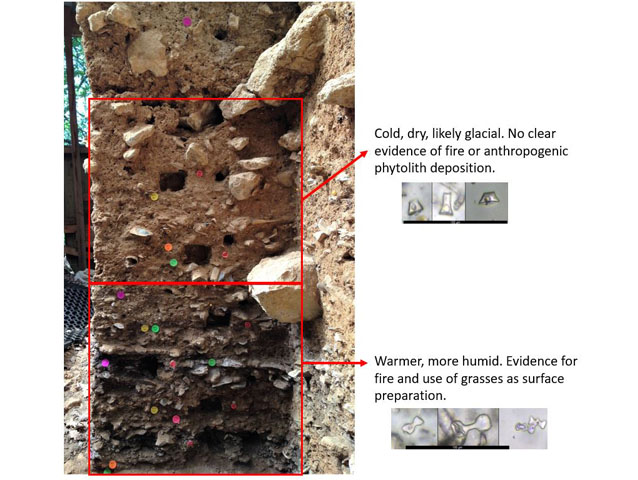
Neanderthal plant use and pyrotechnology
- Post by: Doris Barboni
- May 6, 2019
- Comments off
Wroth, K., Cabanes, D., Marston, J.M., Aldeias, V., Sandgathe, D., Turq, A., Goldberg, P., Dibble, H.L., 2019. Neanderthal plant use and pyrotechnology: phytolith analysis from Roc de Marsal, France. Archaeol Anthropol Sci. doi: https://doi.org/10.1007/s12520-019-00793-9
The plant component of Neanderthal subsistence and technology is not well documented in many regions, partially due to the preservation constraints of macrobotanical components in many of these areas. Phytolith assemblages from Roc de Marsal, a Middle Paleolithic cave site in SW France, provide new insight into the relationship between Neanderthals and plant resources. Ninety-seven samples from all archaeological units and 18 control samples are analyzed. Phytoliths from the wood and bark of dicotyledonous plants are the most prevalent, but there is also a significant proportion of grass phytoliths in many samples. Phytolith densities are much greater in earlier layers, which can be related to the presence of combustion features and ash inputs in those layers. These phytoliths indicate a warmer, wetter climate, whereas phytoliths from upper layers indicate a cooler, drier environment. Phytoliths recovered from combustion features indicate that wood was the primary plant fuel source, while grasses may have been used as surface preparations. The presence and preservation of phytoliths at Roc de Marsal can also be tied to changing use of space through time as the morphology of the cave changed and the occupation area shifted.
Categories: Remarkable publication

